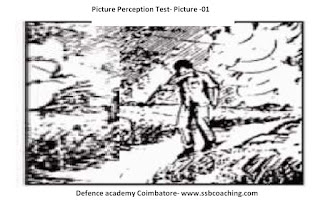Free Revision for RMS and Sainik school entrance exam
Defence Academy Coimbatore
A leading coaching academy for
Sainik, Military and RIMC Schools,
NDA, IMA, AFCAT
SSB, FSB Interview
http://www.ssbcoaching.com
call 094437 20076
Ø
Tropic of Capricorn ( 23 ½ °S)
Ø
Artic of circle ( 66 ½ °N)
Ø
Antarctic Circle ( 66 ½ °S)
The Heat Zones:
Ø
Torrid Zone receives the maximum heat.
Ø
Temperate zone has moderate temperature.
Ø
Frigid Zone has cold climate as the sun rays are
always slanting.
Longitudes:
·
The line of reference running from the North
Pole to the South Pole is called Meridian of Longitude.
·
The distance between them are measured in
“Degrees of Longitude”.
·
All meridians are of equal length.
·
The meridian which passes through Greenwich,
where the British Royal Observatory is located is called the Prime Meridian.
Ø
The value of Prime Meridian is 0°
longitude and from it we count 180° Eastward as week as 180°
Westward.
Ø
Prime Meridian divides the earth into two equal
halves, the Eastern Hemisphere and the western Hemisphere.
Ø
180° East and West meridians are on the same
line.
Ø
We can locate any point of the globe if we
know its latitude and longitude.
Ø
As the earth rotates from West to East, those
places East of Greenwich will be ahead of Greenwich Time and those to the West
will be behind it.
Ø
The earth rotates 360 ° In about 24 hours
Ø
At any place a watch can be adjusted to read 12
O’clock when the sun is at the highest point in the sky.
Ø
India located East of Greenwich at 82° 30’E, is
5 hours and 30 minutes ahead of GMT.
Ø
82° 30’E is treated as the Standard Meridian of
India. The local time at this meridian is known as the Indian Standard
Time(IST)
Ø
Inner planets: The inner planets are the planets
that orbit around the Sun between the Sun and the Asteroid belt, that is are
close to the sun. These are Mercury, Venus, Earth and Mars.
Ø
Outer planets: The Outer Planet are the planets
that orbit the sun beyond the asteroid belt, that is, are very far away from
the sun. These are Jupiter, Saturn,
Uranus and Neptune.
Ø
THE SUN: The Sun is a star that acts as the
“Head” of the solar system and around which all planets revolve. Note that the Sun is not at the centre of the
orbit.
|
No
|
Name of Planet
|
No of days it takes to Orbit around
the SUN
|
|
1
|
Mercury
|
88 days
|
|
2
|
Venus
|
255 days
|
|
3
|
Earth
|
365 days it has One moon
|
|
4
|
Mars
|
687 days - It has 2 Moons
|
|
5
|
Jupiter
|
11 years and 11 months—It has 16 Moons
|
|
6
|
Saturn
|
29 years and 5 months --- 18 Moons
|
|
7
|
Uranus
|
84 Years----- 17 moons
|
|
8
|
Neptune
|
165 years --- 8 moons
|
|
9
|
Pluto
|
A dwarf planet
|
|
10
|
New Planet
|
2003 UB313
|
Day one test:
|
Q.No:
|
QUESTIONS
|
Your Answer
|
|
1
|
The planet known as the Earth’s Twin
is_____
|
|
|
2
|
Which is the third nearest planet to
the sun?
|
|
|
3
|
All the planets move around the sun in
a ___Path
|
|
|
4
|
The Pole star indicates the
direction to the _____
|
|
|
5
|
Asteroid are found between the orbits
of ___
|
|
|
6
|
A group of _____ forming various
patterns is called a_______
|
|
|
7
|
A huge system of starts is
called_______
|
|
|
8
|
_____ is closest celestial body to our
earth.
|
|
|
9
|
Planets do not have their own ___ and
_____
|
|
|
10
|
Write the name of all the planets in
our solar system from nearest to sun to the furthest
|
|
|
11
|
Purnima is the day when Moon
is________
|
|
|
12
|
Saptarishi (Big Bear) is a group of
|
|
|
13
|
Which star points to North
|
|
|
14
|
Planet earth is also called the ____
Planet
|
|
|
15
|
The Small Bear Constellation is better
known as the___
|
|
|
16
|
____ are elongated fixed paths in
which a celestial body always remains
|
|
|
17
|
Meteoroids heat up and burn due to____
|
|
|
18
|
Stars are celestial bodies that are ____and____
|
|
|
19
|
Three planets having rings around them
are____, ____ & ___
|
|
|
20
|
The shadows on the moon’s surface are
due to ____ & ____
|
|
|
21
|
The planets do not possess their own
____ and _____
|
|
|
22
|
The Greek Word which is the origin of
the word “Planets” mean
|
|
|
23
|
The Sun is about ____ million km away
from earth
|
|
|
24
|
Pluto was declared a “Dwarf Planet” in
Aug 2006 ( True / False)
|
|
|
25
|
Saptarishi and Ursa Major are two
different Constellation (T/F)
|
|
|
26
|
The earth moves around its_______
|
|
|
27
|
Latitudes are measured in ________
|
|
|
28
|
Tropic of Cancer is_________ Degree
_____
|
|
|
29
|
The value of the Prime Meridian
is________ Degrees
|
|
|
30
|
The total number of Longitudes
are_______
|
|


Comments
Post a Comment